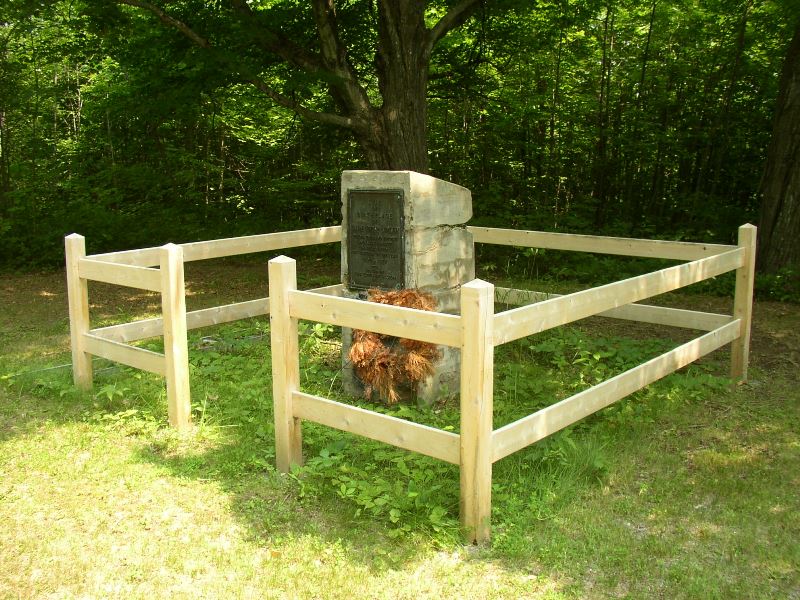
Birthplace in Albion of Ellijah Lovejoy, an anti-slavery journalist murdered for his outspoken publications. (2003)
While an accepted custom in the colonies, it was practiced in Maine as early as 1660 (see comment below) and in 1733 when the parish at York (then Agamenticus) “VOTED that there be a Slave Bought for the Parish to be Employed for the use of said Parish in Labouring for the Rev. Samuel Moody.” In 1736 a female African-American slave was obtained for Mr. Moody. Captain James Littlefield was a slave owner in the 18th century in Wells. A slave cemetery is across the street from the historic Littlefield Tavern in Wells..
Although Massachusetts abolished slavery in 1789, early Census reports, beginning in 1790 routinely recorded the ownership of African American slaves in Maine. The issue of slavery divided the Congregational Church in Center Lovell in 1841.
Prior to the Civil War, several “compromises” were arrived at in the U.S. Congress to allow new states to enter the union. The Missouri Compromise was concisely summarized by the Smithsonian Institution:
This agreement, worked out in the House and Senate, allowed Maine to be admitted to the Union as a free state, allowed Missouri to be admitted without restrictions on slavery, and banned slavery in the rest of the Louisiana Purchase territories north of Missouri’s southern border. The arguments leading up to the Missouri Compromise brought to a head the extreme differences between the North and South on the issue of slavery.
Both before and during the Civil War, many Mainers, famous and not so famous, opposed slavery in various ways. Among them are the following: Elijah Parish Lovejoy, Harriet Beecher Stowe, and Ellen G.H. White.
Additional resources
Banks, Charles E.. “Domestic Life in Provincial Times.” in Smith and Schriver. Maine: A History Through Selected Readings.
Zazima, Katie. “In Maine, Restoring Long History Long Hidden.” New York Times. https://www.nytimes.com/2005/07/09/us/in-maine-restoring-history-long-hidden.html (accessed 7/16/2020)
Smithsonian Institution. “Unit 3: Abolition and the Civil War.” http://www.npg.si.edu/edu/brush/guide/unit3/statemn.html (accessed March 18, 2012)
Wall, Patricia Q. LIVES OF CONSEQUENCE: Blacks in Early Kittery & Berwick in the Massachusetts Province of Maine. Portsmouth Marine Society Press. 2017. Portsmouth, NH.
Williamson, Joseph, Esq., “Slavery in Maine,” Collections of the Maine Historical Society, Vol. VII, 1876


Wrong date for start of slavery in Maine. 1660 sale of Mingo in Kittery is earliest found date. However, it is quite likely enslaved Blacks were present in southern Maine as early as 1648. For major new work on topic see LIVES OF CONSEQUENCE: Blacks in Early Kittery & Berwick in the Massachusetts Province of Maine. Patricia Q. Wall. (Portsmouth Marine Society Press, Portsmouth, NH 2017)
Mrs. Wall, your book has become an important resource for me in my research of my family. My seventh great grandfather is mentioned in your work as a slave owner. I also have ancestors who were enslaved in Berwick. I recommend your book to anyone researching their slave or slave owning ancestry. LLD1611@aol.com